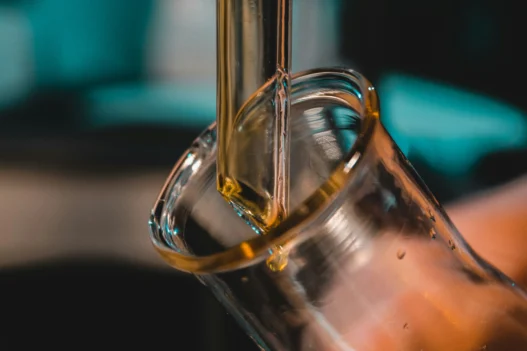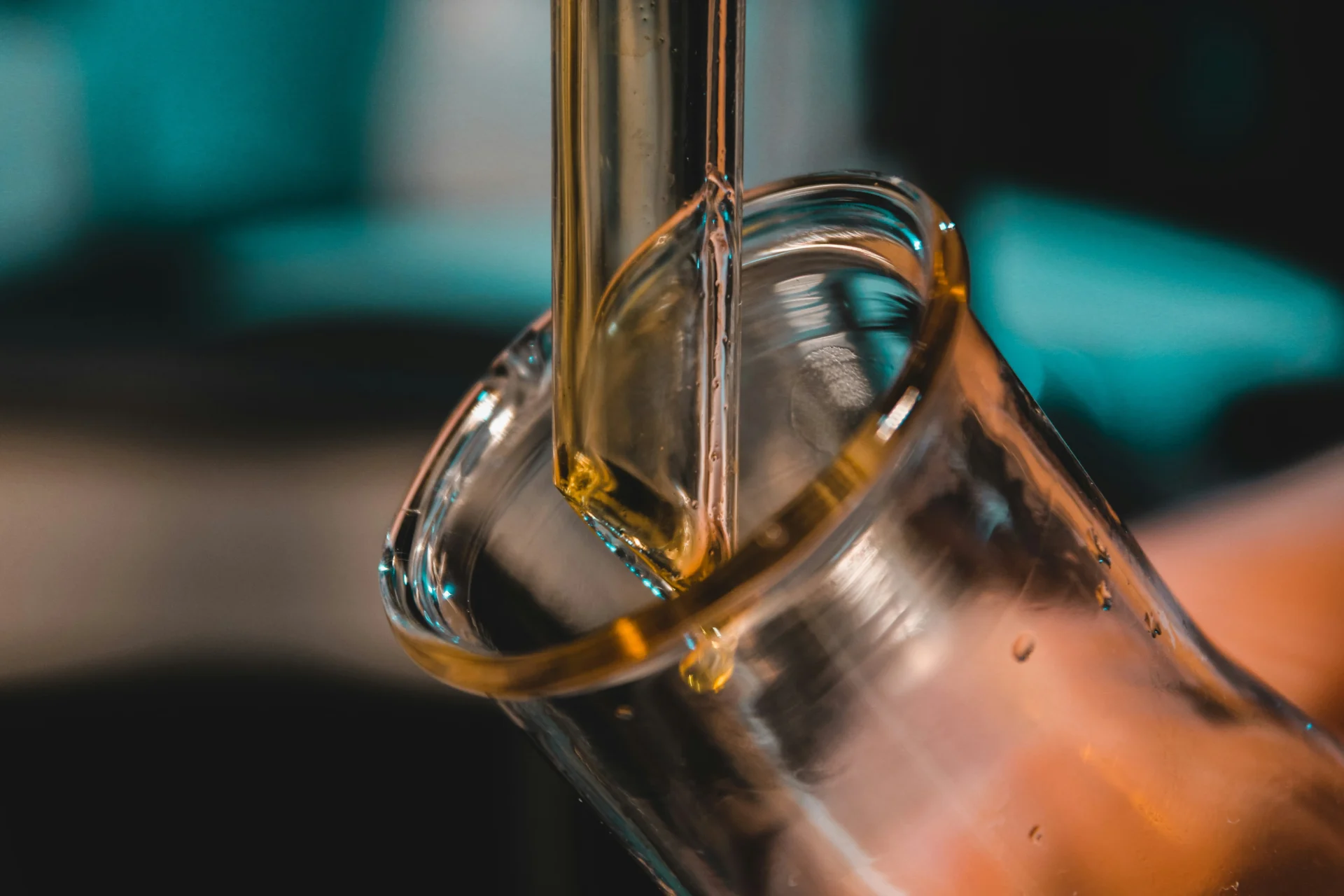Stilbene, a compound found in a variety of plant species, has significant relevance to everyday life due to its versatile applications in various industries. Its presence in skincare products has been linked to anti-aging and skin brightening properties, making it a popular ingredient in the beauty industry. Additionally, stilbene’s role in pharmaceuticals has been researched for its potential benefits in treating cancer and cardiovascular diseases. Its use in organic synthesis also plays a crucial role in the production of dyes, pigments, and plastics. Overall, stilbene’s diverse properties make it a valuable component in numerous consumer goods and medical treatments.
Table of Contents:
- 💡 Commercial Applications
- ⚗️ Chemical & Physical Properties
- 🏭 Production & Procurement
- ⚠️ Safety Considerations
- 🔬 Potential Research Directions
- 🧪 Related Compounds
💡 Commercial Applications
Stilbene, a colorless crystalline compound, is commonly used in commercial and industrial applications as a starting material for the synthesis of various organic compounds, including dyes, optical brighteners, and fluorescent whitening agents. Its ability to undergo photochemical reactions makes it valuable for applications requiring photostability and fluorescence.
In the pharmaceutical industry, stilbene derivatives have shown promise as potential drug candidates due to their diverse pharmacological properties. These compounds have been explored for their potential as anticancer agents, anti-inflammatory agents, and antimicrobial agents. Additionally, stilbene molecules have been studied for their potential therapeutic effects on various diseases, including cardiovascular diseases and neurodegenerative disorders.
Stilbene’s presence in commercial and industrial applications extends to the field of medicine and healthcare, where its derivatives are utilized in the development of medications. Stilbene compounds have been investigated for their potential as antioxidants, anti-aging agents, and neuroprotective agents. These compounds have shown potential in mitigating oxidative stress, reducing inflammation, and protecting cells from damage, highlighting their importance in the pharmaceutical and healthcare industries.
⚗️ Chemical & Physical Properties
Stilbene is a white crystalline solid with a faint odor. Its appearance can vary depending on the purity of the compound.
The molar mass of stilbene is 180.23 g/mol, and its density is approximately 1.28 g/cm³. This places it between common food items such as table salt (molar mass of 58.44 g/mol, density of 2.17 g/cm³) and sugar (molar mass of 342.30 g/mol, density of 1.59 g/cm³).
Stilbene has a melting point of 124-125°C and a boiling point of 305°C. Compared to common food items like butter (melting point of 32-35°C) and water (boiling point of 100°C), stilbene exhibits significantly higher melting and boiling points.
Stilbene is insoluble in water but soluble in organic solvents like benzene. It has low viscosity, similar to water, making it easier to handle and manipulate compared to more viscous substances like honey or syrup.
🏭 Production & Procurement
Stilbene, a hydrocarbon compound, is typically produced through the alkylation of benzene with ethylene. This reaction occurs under specific conditions utilizing a catalyst to produce Stilbene as the end product.
Stilbene can be procured through various chemical suppliers or manufacturers specializing in organic compounds. It is typically packaged and transported in sealed containers to prevent degradation or contamination during transit. The compound can be shipped through standard transportation methods such as trucks, trains, or ships.
Upon arrival at its destination, Stilbene is stored in a controlled environment to maintain its stability and purity. It is important to adhere to proper handling and storage guidelines to ensure the quality of the compound. Stilbene is commonly used in organic chemistry research, pharmaceuticals, and the production of optical brighteners.
⚠️ Safety Considerations
Safety considerations for Stilbene must be carefully noted due to its potential hazards. Stilbene is a known irritant to the skin, eyes, and respiratory system. Exposure to Stilbene can cause irritation, redness, and discomfort. Therefore, it is important to use appropriate personal protective equipment, such as gloves and safety goggles, when handling Stilbene.
Hazard statements for Stilbene include “Causes skin irritation,” “Causes serious eye irritation,” and “May cause respiratory irritation.” These hazard statements indicate the potential risks associated with exposure to Stilbene. It is crucial to take necessary precautions to minimize the likelihood of experiencing these hazards.
Precautionary statements for Stilbene include “Avoid breathing dust/fume/gas/mist/vapors/spray,” “Wear protective gloves/protective clothing/eye protection/face protection,” and “IF INHALED: Remove person to fresh air and keep comfortable for breathing.” These precautionary statements are important guidelines to follow to ensure safe handling and usage of Stilbene. By adhering to these recommendations, individuals can minimize the risks associated with exposure to Stilbene.
🔬 Potential Research Directions
One potential research direction for Stilbene involves exploring its potential applications in the field of medicine. Studies could investigate the compound’s anti-inflammatory properties, its ability to inhibit certain enzymes, or its potential as an anti-cancer agent.
Another avenue for research on Stilbene could involve its role in plant biology. Researchers may seek to further understand its biosynthesis pathways, its function as a phytoalexin in response to stress, or its potential impact on plant growth and development.
Furthermore, Stilbene’s potential as a photostable dye or as a component in the development of organic electronic materials could be an area of interest for future studies. Investigations into its optical and electrical properties, as well as its potential for use in photovoltaic devices, may open up new avenues for research in the field of materials science.
🧪 Related Compounds
One similar compound to Stilbene is 1,4-Diphenylbutadiene. This compound shares a similar backbone structure with Stilbene, containing two phenyl rings connected by a conjugated double bond system. 1,4-Diphenylbutadiene exhibits similar photochemical and photophysical properties to Stilbene due to its extended conjugation.
Another compound with a structure akin to Stilbene is Anthracene. Anthracene contains a tricyclic ring system with three fused benzene rings. While not identical to the biphenyl structure of Stilbene, Anthracene shares a conjugated system of double bonds that results in similar electronic properties and reactivity.
Dibenz[a,h]anthracene is another compound related to Stilbene, featuring a condensed polycyclic aromatic hydrocarbon structure. This compound consists of four fused benzene rings, leading to significant pi-stacking interactions and interesting optical properties similar to those observed in Stilbene.








